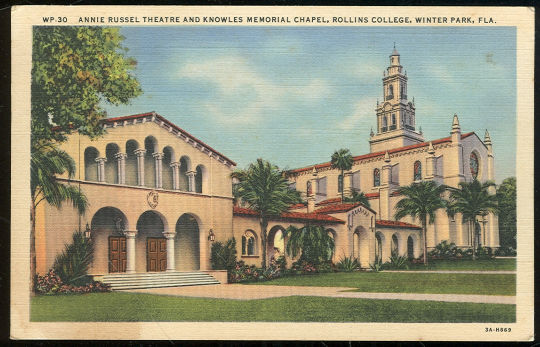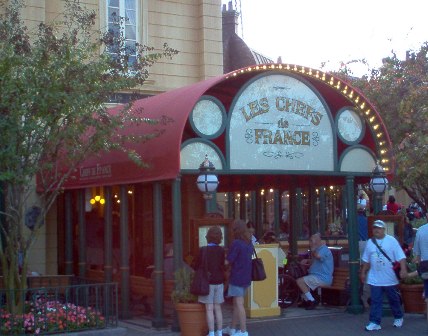I recently flew down to Raleigh, North Carolina, to see Carolina Ballet perform Tempest Fantasy and The Kreutzer Sonata, a beautiful pair of ballets choreographed by Robert Weiss, the company’s artistic director. The first, a one-act dance version of Shakespeare’s play, is set to the Pulitzer-winning Tempest Fantasy of Paul Moravec, my friend and operatic collaborator. The second, a stage version of Tolstoy’s novella in which dancing is tightly integrated with the spoken word, is set to a score sculpted by J. Mark Scearce out of Beethoven’s “Kreutzer” Sonata, the work that inspired Tolstoy, and Janacek’s First String Quartet, which was inspired by Tolstoy.
Paul and Mark were on hand for the opening-night performance, to which I also invited Zephyr Teachout, who teaches law at Duke University and to whom I am undoubtedly (if obscurely) related. Zephyr had never before seen any classical ballet, and Tempest Fantasy and The Kreutzer Sonata knocked her for a loop.
 I would gladly have tarried in Raleigh, but I had to fly to Orlando, Florida, where I gave two speeches that weekend. Actually, it wasn’t there that I did my star turns: I spoke in Winter Park, a smallish community (pop. 24,090) on the outskirts of Orlando that is part college town and part old-fashioned resort town. My destination was Rollins College, a liberal-arts school that is home to the Winter Park Bach Festival and the Winter Park Institute. The Bach Festival, which has been in business since 1935, puts on polished performances of large-scale choral and symphonic works in the college’s Knowles Memorial Chapel, a gorgeous little Spanish Gothic edifice designed in 1931 by none other than Ralph Adams Cram. The Winter Park Institute, by contrast, is a brand-new enterprise that brings artists, scholars, and general-purpose eggheads (guess who?) to the campus to speak, perform, write, and hang out.
I would gladly have tarried in Raleigh, but I had to fly to Orlando, Florida, where I gave two speeches that weekend. Actually, it wasn’t there that I did my star turns: I spoke in Winter Park, a smallish community (pop. 24,090) on the outskirts of Orlando that is part college town and part old-fashioned resort town. My destination was Rollins College, a liberal-arts school that is home to the Winter Park Bach Festival and the Winter Park Institute. The Bach Festival, which has been in business since 1935, puts on polished performances of large-scale choral and symphonic works in the college’s Knowles Memorial Chapel, a gorgeous little Spanish Gothic edifice designed in 1931 by none other than Ralph Adams Cram. The Winter Park Institute, by contrast, is a brand-new enterprise that brings artists, scholars, and general-purpose eggheads (guess who?) to the campus to speak, perform, write, and hang out.
I came to Winter Park at the invitation of John and Gail Sinclair, two fellow Missourians who, like me, have ended up far from home. John is the chairman of Rollins’ music department and the music director of the Bach Institute. Gail is the executive director of the Winter Park Institute and a literary scholar with a double-barreled field of fire: she writes about F. Scott Fitzgerald and Ernest Hemingway, which is sort of like simultaneously specializing in Stravinsky and Schoenberg. They’ve been married for half their lives, have two near-grown children, and show every sign of being entirely happy. I can see why.
John and I went to college together, but we’d been out of touch for three decades, and I was amazed to discover that he’d turned himself into an accomplished conductor who led the Bach Festival Chorus and Orchestra in brisk-tempoed, impressively direct performances of Brahms’ German Requiem and Dvorak’s “New World” Symphony. In between concerts and speeches, he and Gail showed me around the campus and the town that surrounds it, a handsome place whose Spanish-style architecture is quintessentially Floridian. The faculty members and townspeople whom I met were smart and friendly, the weather warm and inviting, the restaurants varied and excellent.
Visiting Winter Park and Raleigh reminded me of what I gave up by moving to Manhattan a quarter-century ago. It goes without saying that the cultural offerings in such places are less numerous than those of my adopted home town, but the residents treasure what’s there precisely for that reason, and become vested in it to a degree that New Yorkers, with their what-have-you-done-for-me-lately mentality, can’t easily imagine. In any case there are additional compensating virtues, many of them not unlike the ones that led my brother to settle down in Smalltown, U.S.A., instead of doing as I did and seeking his fortune elsewhere. I’ve never doubted that the life I chose was the one I needed at the time, but whenever I visit a place like Winter Park, I find myself wondering whether I’ll always feel the same urgent need for the ever-shifting crosscurrents of big-city life.
The weather in central Florida started out balmy and ended up crisp, at least by southern standards (I think it got all the way down to sixty degrees by the time I left). In the meantime a blizzard had blown into the New York area, and by the time I arrived at the Orlando airport on Monday morning, I was starting to doubt the wisdom of flying to LaGuardia. I called Mrs. T, who told me to be sensible and wait a day before coming home, so that’s what I did: I rebooked my return flight, checked into Orlando International Airport’s in-terminal hotel, invited myself to dinner with the Sinclairs, and spent the rest of the morning strolling around the mall-sized shopping area of the best-run, best-designed airport I’ve ever seen. Unaccustomed to finding myself in a strange place with no shows to see or deadlines to hit, I wallowed in the unfamiliar sensation of having nothing to do, and decided that there was much to be said for it.
 Orlando is, of course, the home of Disney World, a place I’d never been. John conducts there as well as at Rollins College, so he and Chuck Archard, a top-notch jazz bassist who also teaches at Rollins, picked me up at five-thirty and drove me to Epcot Center, where we dined at a first-class French restaurant and marveled at the absence of small children. I could easily have spent another hour wandering up and down Epcot’s spacious, orderly boulevards, but I’d booked an early flight on Tuesday, so instead I returned to my hotel room, called Mrs. T to let her know that her advice had served me well, and got a good night’s sleep.
Orlando is, of course, the home of Disney World, a place I’d never been. John conducts there as well as at Rollins College, so he and Chuck Archard, a top-notch jazz bassist who also teaches at Rollins, picked me up at five-thirty and drove me to Epcot Center, where we dined at a first-class French restaurant and marveled at the absence of small children. I could easily have spent another hour wandering up and down Epcot’s spacious, orderly boulevards, but I’d booked an early flight on Tuesday, so instead I returned to my hotel room, called Mrs. T to let her know that her advice had served me well, and got a good night’s sleep.
Twelve hours later I was on the Upper West Side of Manhattan, where the temperature was fifty degrees colder, the sidewalks were covered with sooty snow, and a bagful of mail awaited me. I’d throttled back up to my usual urban ground speed by the time I caught a cab to Broadway that night to see Guys and Dolls, but I couldn’t shake the feeling that I’d just caught a fleeting glimpse of a parallel universe, one in which I could almost imagine myself at home.
